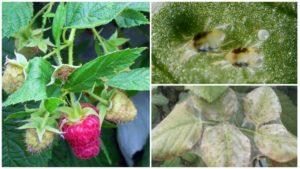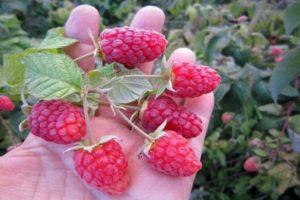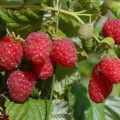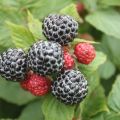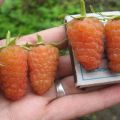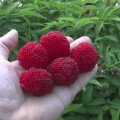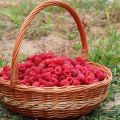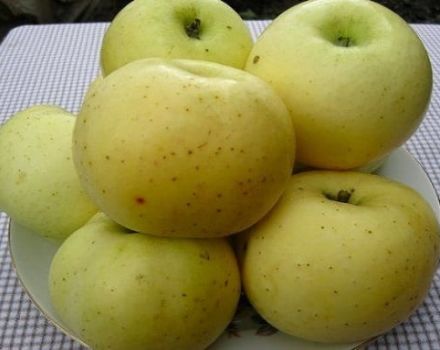Description and characteristics of the Maroseyka raspberry variety, cultivation and care
Cultivation of Maroseyka raspberries does not require complex agronomic techniques. But the plant will delight you with an excellent harvest, large sweet berries with a stunning sugary aroma.
Content
- 1 Breeding history of the variety
- 2 Advantages and disadvantages of the variety
- 3 Description and technical characteristics of raspberry Maroseyka
- 4 Planting a plant on the site
- 5 Rules for caring for seedlings and adult bushes
- 6 When to wait for the first harvest
- 7 Timing of harvesting fruits
- 8 The main mistakes made when growing this variety
Breeding history of the variety
In the 70s, the appearance of this variety caused a stormy excitement among gardeners. The raspberry variety Maroseyka was bred by Professor Victor Kichin, an employee of the All-Russian Selection Technological Institute of Horticulture and Nursery. He used a Scottish variety with large fruits and excellent taste. The priority was the development of the hybrid genotype. L1 was derived from the genes, which is responsible for the size of the fetuses.
As a result, a high-quality productive variety was obtained, which is characterized by the fact that the appearance of mutants was not detected throughout the entire cultivation segment. One of the weaknesses of L1 is its instability. Over time, in such hybrids, it goes from dominant to recession. In short, after long-term cultivation, the berries become smaller.
Advantages and disadvantages of the variety
Each variety has its positive and negative sides, which gardeners take into account when planting. Raspberry surprises with a list of positive qualities:
- large fruits;
- increased productivity;
- excellent taste and excellent aroma;
- excellent resistance to painful manifestations.

But with all the positive qualities, it is worth considering the negative aspects of the plant. The disadvantages of the variety include:
- raspberries are not remontant;
- not winter hardy, requires winter cover;
- with prolonged (more than 10 years) cultivation, the berries become smaller, this is attributed to genetic instability.
Description and technical characteristics of raspberry Maroseyka
When making the choice of planting material, the varietal indicators of the plant, yield, and the presence of immunity to diseases are taken into account.
The appearance of the bush, leaves and flowering
The bush has a beautiful appearance, spreading, of medium size, up to 1.9 m.Thick shoots have a waxy coating that can keep the plant from fungal infections, frost, and drying out.
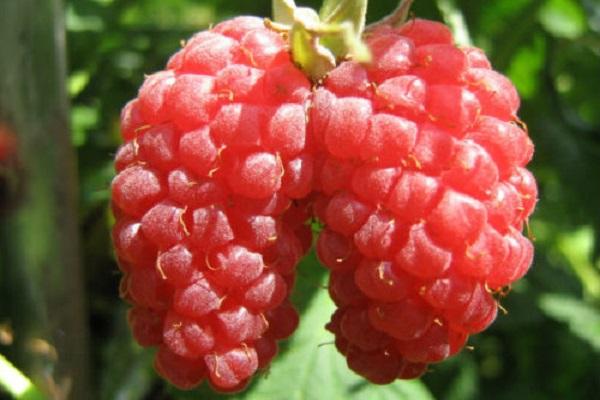
The bush is characterized by the presence of powerful branches, replacement shoots and shoots, respectively, plant reproduction is not difficult. This is done by dividing the bush. Each bush gives 5 to 10 root shoots. The branches are medium, relatively thick, without thorns. They have up to 4 levels of branching. The yield is from 150 to 210 kg per one hundred square meters with industrial cultivation.
The leaf plates of the bush are flat, twisted, warty at the edges, large, green in color with a dark shade.
Productivity and taste of the fruit
One branch of raspberries produces 20 or more large berries. The harvest brings once a year. One plant produces up to 5 kg of yield. With intensive feeding, the yield reaches 6 kg. Berries have the following characteristics:
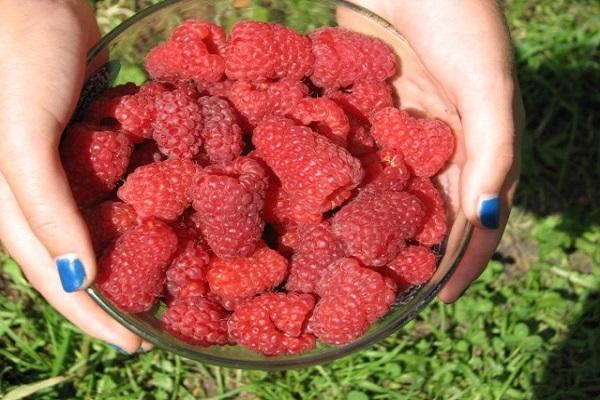
- have a sweet aftertaste with some pleasant sourness;
- bright raspberry aroma;
- weight from 7 to 11 g;
- cone-shaped;
- red color with a light shade and a bluish bloom;
- a small amount of small seeds;
- when ripe, they stay on the bush, do not crumble;
- when fully ripe, they are easily removed from the stalk;
- relatively dense, able to tolerate carriage if collected immature.
Frost and drought resistant
When cultivated in areas where frosts reach -30 aboutFrom and below, shrub cover is required. To do this, it is recommended to use spunbond, straw, spruce branches, mulch. The works are carried out in the last days of September. By this time, the branches of the plant become flexible. If uncovered raspberries survived the frost, such wintering will affect the yield.
The plant is relatively drought tolerant. With a lack of moisture for a long time, the berries become not juicy, but sweet. The yield is declining.

Immunity to diseases and pests
The plant is characterized by increased resistance to diseases common for raspberries. The stem is protected from fungal infections and bacteria with a felt covering. But with inadequate care, the plant is exposed to purple spot, powdery mildew, anthracnose, rust, chlorosis, or cancer.
Planting a plant on the site
The main requirements before planting bushes are the choice of location, planting material, soil preparation, correct planting.
Choosing planting material
Cultivation, development and fruiting of a plant are in direct proportion to the quality of the planting material. A healthy seedling is needed to form a viable, fertile bush with a strong root system. Sick, pest-infested or mechanically damaged seedlings will spend a lot of time on recovery and development. Even after resuscitation, this will affect their fruiting.
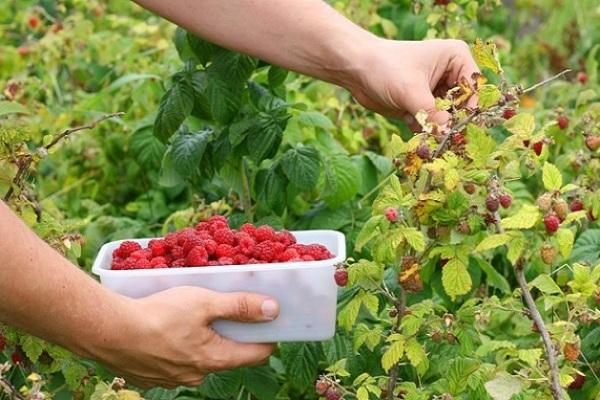
Accordingly, when buying planting material, preference is given to seedlings with a strong root system. They must be fresh. To do this, you need to scratch the root of the bush. Fresh wood will appear on a quality seedling. A dark or dry scratch indicates that the planting material was not stored correctly, is affected by disease or rot.
In addition to the roots, it is important to examine the shoots. They should be with a solid surface, without fractures. A seedling with two lignified shoots is considered ideal.
Deciding on a place in the garden
Maroseyka is a light-loving variety, but can tolerate light shade. For planting young shoots, you must choose a bright place. In the shade, the branches of the bush stretch out, become fragile, and can break under the weight of the fruit. In addition, the fruits will become sour and less aromatic. In the place of planting the bushes should not be water after rains, snow melting.Raspberries do not like drafts.

The soil must be fertile. The quality of berries, their quantity depends on the physical and chemical parameters of the soil. A soil with neutral acidity is ideal for planting a plant.
Preparing the hole and soil
For active growth and fruiting of bushes, it is recommended to add nitrogenous, mineral fertilizers to the holes. You can use organic.
Landing technology and scheme
Prepared seedlings need to be soaked for 2-3 hours in water, then treated with a clay mash. Cut the upper shoots at a level of 0.2 m.
The further development of the plant and its fruiting depends on the correct planting. It is important to take into account the distance from other plants, the optimal distance is 1.5 m.
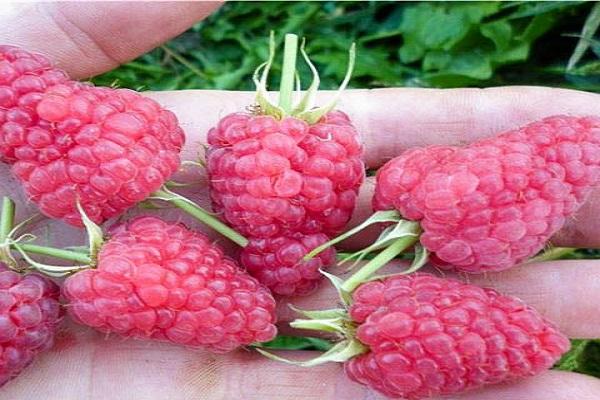
The timing of disembarkation is also taken into account. In spring, the optimal time is when the temperature stabilizes, at least +15 aboutC. If planted in cool soil, the plant weakens, the likelihood of fungal infections increases.
In the fall, the landing period falls on a period of time when the heat becomes less, and ends two weeks before the onset of cold weather. The bushes should take root before frost.
Scheme of actions:
- make a hole in the size of the horse system of the seedling;
- put a little chipped brick on the bottom to create drainage;
- pour a mixture of humus with wood ash;
- pour in water;
- place a seedling in the hole, sprinkle with soil, tamp.
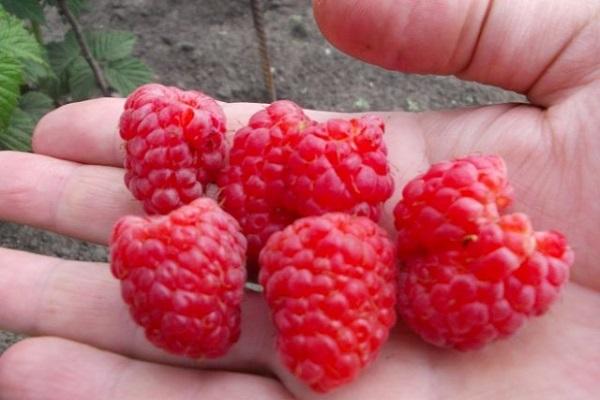
Rules for caring for seedlings and adult bushes
To obtain the desired result, it is important to follow the growing recommendations. After planting, the plant needs full care so that it quickly adapts and strengthens. An adult plant needs timely feeding, watering and pruning to ensure normal fruiting.
Watering
After planting the bushes, it is necessary to loosen the soil, destroy weeds. Watering is carried out in sufficient quantity, on time. The variety does not tolerate soil cracking, but excessive moisture also has a negative impact. When dried, the berries are not juicy, but sweet. And with an excess of moisture, the berries become vulnerable to rot, fungal infections. Accordingly, moderation is important. Therefore, when watering a plant, environmental conditions, rainfall, etc. are taken into account.

Top dressing
Before planting, potassium preparations, superphosphate are introduced into the soil. When flowering, add granulated azophoska to the fruit ovary. It is important to provide the required amount of potassium. To build up the mass of greenery, poultry droppings are used.
In the fall, fertilizers are applied to prepare the plant for winter frosts. This requires potassium sulfide.
Shaping and trimming
The bush gives a lot of growth. It is necessary to make several pruning so that nutrients are given to the formation of fruits.
It is necessary to prune the bushes in the spring to remove weak, frozen branches. In the fall, a procedure is performed to prepare the plant for winter. Autumn pruning is done 2-3 weeks before the onset of frost. Weak and young branches must be removed.
To prevent overgrowing of the bush, excess root shoots are cut out, about 8 pieces are left.

If you pinch young shoots at a height of up to a meter, this will stimulate the formation of new lateral branches. The bush will turn out to be powerful, more productive.
Garter bushes
Raspberries reach 1.9 m in height, respectively, are mounted on supports so that the branches do not break off under the weight of the fruit. Planting is done in rows, after tying is carried out. To do this, you need to install a support and tension the wire.
Preventive treatment against insects and diseases
The variety is characterized by increased resistance to common diseases and pests. But with improper care, the plant becomes vulnerable.

Preventive actions:
- irrigation in spring with special means: "Fundazol", "Skorom", "Antracol" or Bordeaux mixture;
- if damaged, remove all diseased parts, treat the rest of the plant with drugs;
- from insects it is recommended to use "Aktara", "Provado", "Envidor".
How fast the variety grows
Correctly planted planting material with proper care quickly adapts to environmental conditions and begins to develop. Bushes give a good harvest the next year of life.
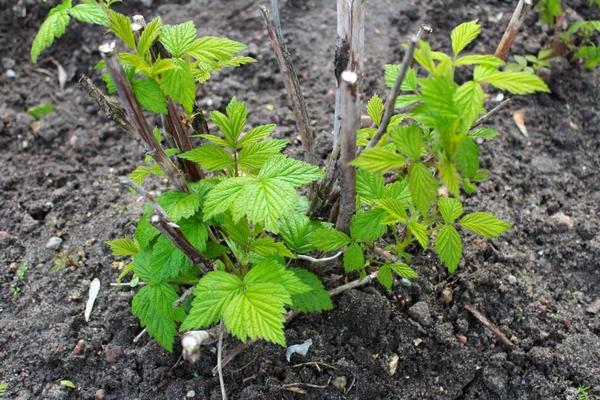
When to wait for the first harvest
After planting young seedlings, mass fruiting occurs in the next season. The abundance of the crop depends on the quality of care.
Timing of harvesting fruits
Harvesting begins in early July and lasts until early August. Ripening period may vary depending on weather conditions, place of growth.
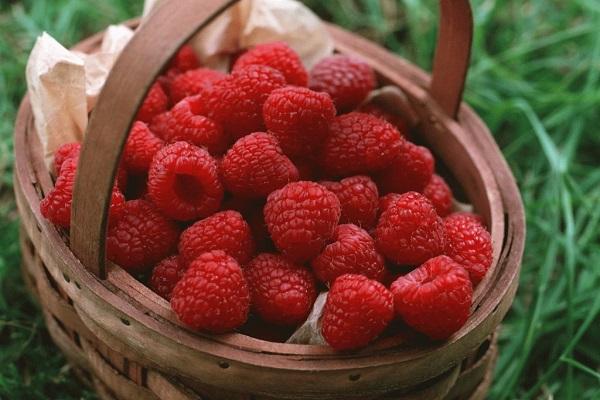
The main mistakes made when growing this variety
When growing, it is important to adhere to the necessary rules of agricultural technology. Common mistakes in raspberry cultivation:
- Failure to comply with the distance between the bushes. The planting is overgrown, shaded, the bushes lack nutrients, the berries become sour, the yield drops.
- Not pruning bushes. The culture thickens, besides the yield, the plant suffers from diseases.
- The plant is not sheltered for the winter. Raspberries may freeze or yield less.
Subject to the simple rules of agricultural technology, the plant will delight with a bountiful harvest.
